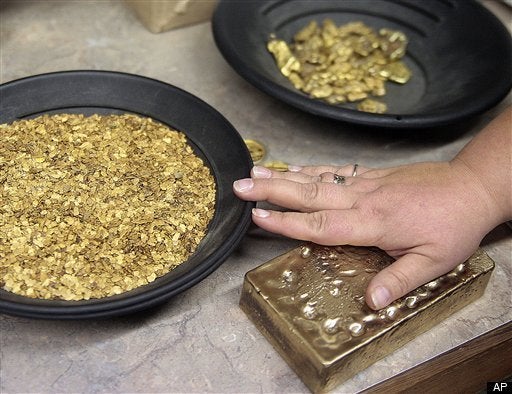
Media's gold-bashers continue to grow, ridiculing an investment in the precious metal and making themselves look ridiculous in the process as the price continues its Mt. Everest climb.
ABC's Nightline, which averages 3.5 million viewers, is the latest to join the media's gold firing squad, raising the question as to whether the precious metal, like the dot-com and real estate crazes, is simply another bubble.
Its gold message was implicit: Stay away and get out while the getting is good.
That warning follows earlier media salvos at gold, which is widely viewed as a safe-haven investment in periods of fear and uncertainty.
In October 2008, for example, when the metal was trading somewhere in the middle of the $900s, the Wall Street Journal took pot shots, describing gold as a "lousy investment." It was the worst kind of advice. With the metal climbing Friday to an all-time high of around $1,284 -- a gain of more than 40% -- we should all own such a lousy investment.
Last July, with gold in the high $1,100s, CNBC anchor Maria Bartiromo, donning her investment advisory hat, also got in the act, telling viewers it was time to dump the metal. Bum timing! Since then, gold is up about 8%.
Nothing, of course, goes up forever, and every hot investment invariably gets whacked by periodic declines. And given gold's steady and more than 3.5-fold rise from $270 an ounce in 2000 and more than a 100% increase from its 2005 close of $517, a sizable drop in the price of the metal would hardly be a shocker. In the mean time, gold is continuing its winning ways in 2010, having risen sharply from last year's close of $1,087.50.
If, indeed, there is a sharp drop, the reaction from Mark Leibovit, editor of the online VR Gold Letter in Sedona, Arizona is "So what?" The worst-case scenario, he says, "is gold could fall a couple of hundred dollars. [But] more important," he observes, "it's not parabolic; the trend is still up."
Leibovit, who has made some excellent short-term gold calls, both up and down, and sees the metal trading at $1,320 to $1,350 in a couple of months, argues that gold itself has become a currency. In the process, he sees it replacing the fiat currencies, namely the dollar, the Euro and the yen.
Describing the metal as "a long-term steady hold," Leibovit says "if you run the printing presses 24/7 and diminish the value of currencies -- which is happening all over the world -- gold has nowhere to go but up."
It all raises a couple of obvious questions: Given its meteoric rise, is gold still a viable investment? And if it is, do the fundamentals support such a purchase.
A boisterous yes on both questions comes from Jeffrey Nichols, managing director of American Precious Advisors, who recently offered a compelling nine-point argument to make his case at a precious metal seminar in Bangkok, Turkey. Here they are:
- Inflationary U.S. monetary and fiscal policies -- past, present and future -- coupled with a double-dip recession-like economy -- or worse -- for years to come.
To Nichols, it means not only will the price of gold move substantially higher in the months ahead, but that the uptrend still has years to go. His outlook calls for gold to reach $1,500 before year end or in the first half of 2011, and then scoot to $2,000, $3,000 or $5,000 before the gold-price cycle shifts into reverse.
If you buy this bullish thesis, what are smartest gold plays for the average investor?
Leibovit cites three of them: an exchange-traded fund featuring large-cap gold stocks (symbol: GDX), an ETF focusing on small-cap gold shares (GDXJ) and the Central Fund of Canada (CEF), which invests in the actual physical metals, 55% gold and 45% silver.
Incisive financial commentator Ben Stein, who brought some sanity to Nightline's gold piece, probably summed it up best when he said "when there is mania for an investment, it often winds up in tears."
The $64,000 question is whether the modern gold rush is actually a mania or, in fact, a legitimate reflection of serious financial and economic stresses.
Yet another question: Would Nightline have done better panning for gold than panning the metal?
What do you think? Email me at Dandordan@aol.com